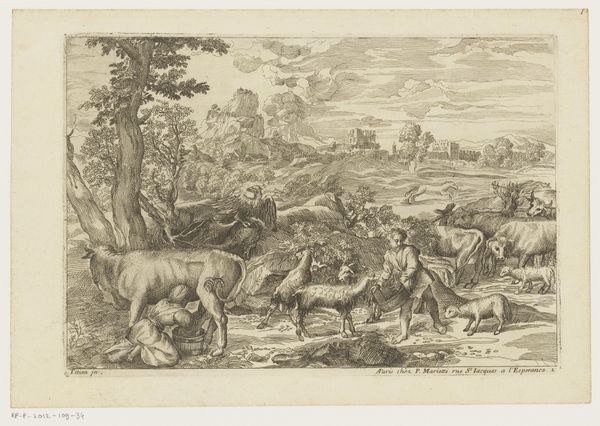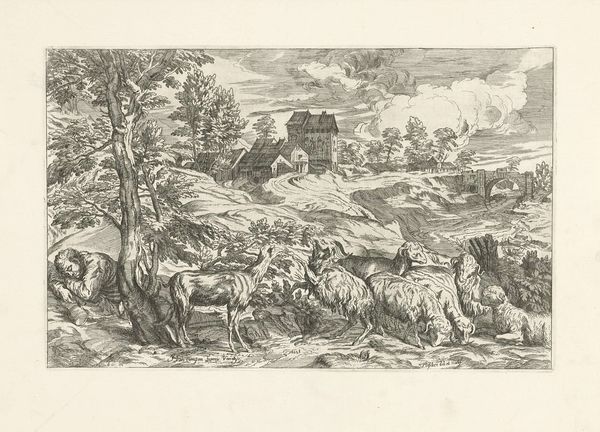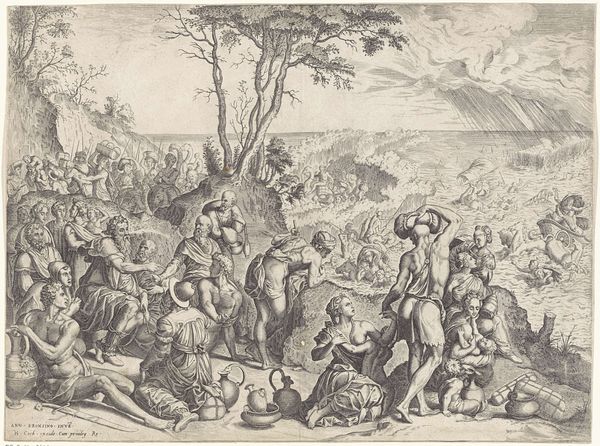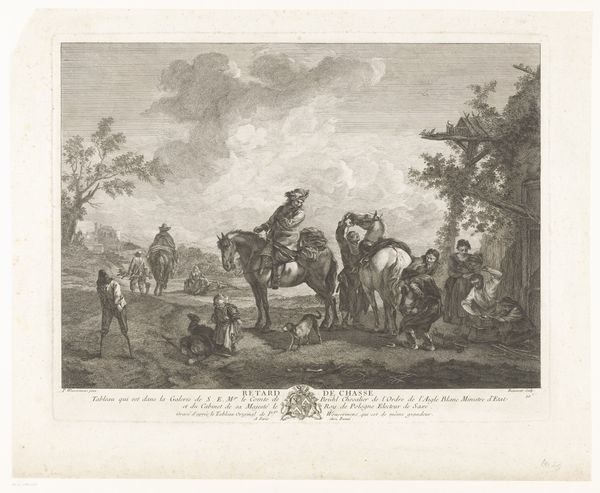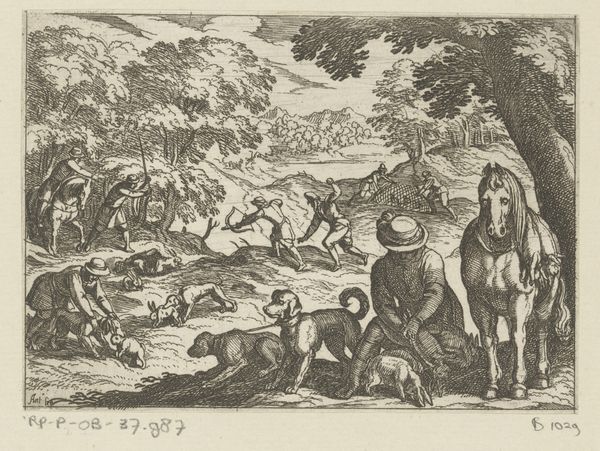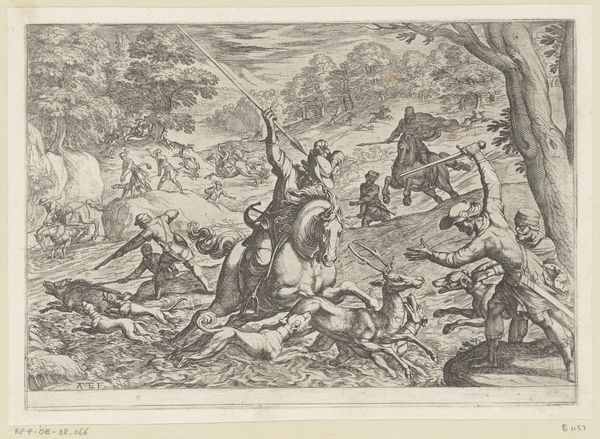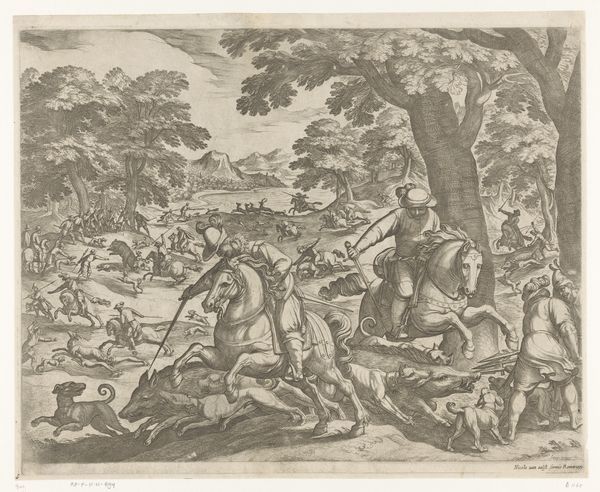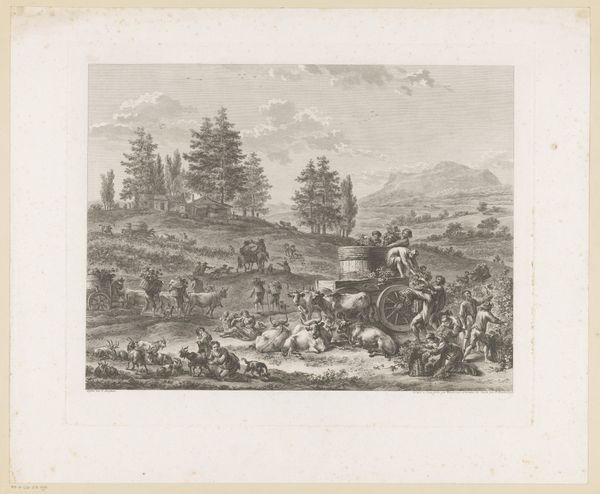
print, etching, ink, engraving
#
baroque
# print
#
etching
#
landscape
#
ink
#
genre-painting
#
engraving
Dimensions: height 323 mm, width 443 mm
Copyright: Rijks Museum: Open Domain
Jean Lepautre etched "Herders met kudde schapen in een kustlandschap" in the seventeenth century, during a period of immense social change in the Netherlands. Here, we see an idyllic scene of rural life; shepherds guide their flock across a coastal landscape, while in the distance, a bustling port city thrives. This image creates meaning through visual codes, historical associations and cultural references. The Dutch Golden Age was a time of economic prosperity fueled by maritime trade, and such landscapes reflected a national pride in the land. Yet, this was also a period marked by the rise of a merchant class and growing social inequality. Works like this present a sanitized version of rural life, intentionally evoking classical pastoral ideals, perhaps as a subtle commentary on the changing social structures of the time. By looking at estate records, economic histories, and other cultural artifacts from the period, we can better understand how the artwork reflects the social conditions of its time. The meaning of art is always contingent on the social and institutional context in which it was made and received.
Comments
No comments
Be the first to comment and join the conversation on the ultimate creative platform.
